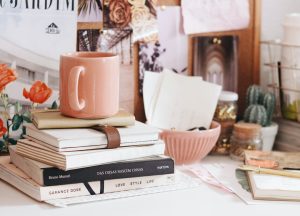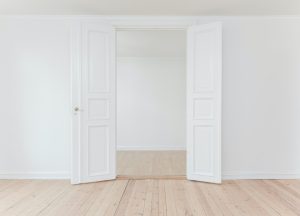De Kracht van Contrasten in Huisdecoratie: Hoe je jouw interieur naar een hoger niveau tilt

Contrast is a fundamental element in home decoration that can greatly enhance the overall aesthetic and atmosphere of a space. By incorporating contrasting elements, such as colors, textures, patterns, and materials, you can create visual interest and depth in your interior design. In this article, we will explore the importance of contrasts in home decoration and provide tips and examples on how to effectively incorporate them into your own space.
Why contrasts are important in home decoration
Contrasts are important in home decoration because they add interest and depth to a space. Without contrasts, a room can feel flat and uninspiring. By incorporating contrasting elements, you can create visual tension and make a space more visually appealing. For example, using contrasting colors can create a vibrant and lively interior, while mixing different textures can add a cozy and layered look.
There are various types of contrasts that can be used in home decoration. Color contrasts involve using colors that are opposite each other on the color wheel, such as blue and orange or red and green. Texture contrasts involve mixing different textures, such as smooth and rough or soft and hard. Light and dark contrasts involve using light and dark colors to create depth in a space. Pattern contrasts involve mixing different patterns, such as stripes and florals or geometric and organic.
Using color contrasts for a lively interior
Color contrasts are an effective way to add vibrancy and liveliness to your interior. One way to achieve this is by using complementary colors. Complementary colors are pairs of colors that are opposite each other on the color wheel, such as blue and orange or red and green. When used together, complementary colors create a strong contrast that can make a space visually striking.
When using bold colors, it’s important to consider the size of the space. In smaller spaces, it’s best to use bold colors as accents rather than on large surfaces. This will prevent the space from feeling overwhelming. In larger spaces, bold colors can be used more liberally, but it’s still important to balance them with neutral tones to create a cohesive look.
Contrasts in textures: the key to a cozy atmosphere
Textures play a crucial role in creating a cozy and inviting atmosphere in your home. Mixing different textures can add depth and visual interest to a space. For example, pairing a smooth leather sofa with a chunky knit throw creates a contrast that is visually appealing and adds warmth to the room.
When mixing textures, it’s important to consider the overall aesthetic you want to achieve. For a more modern and sleek look, you can mix smooth and shiny textures, such as glass and metal. For a more rustic and cozy look, you can mix rough and natural textures, such as wood and stone. The key is to create a balanced and harmonious combination that suits your personal style.
The importance of light and dark contrasts in home decoration
Light and dark contrasts are essential in creating depth and dimension in a space. By using light and dark colors, you can create visual interest and make a room feel more spacious. Light colors tend to make a space feel larger and more open, while dark colors can create a sense of intimacy and coziness.
To effectively use light and dark contrasts, it’s important to consider the natural light in your space. If you have a room that receives a lot of natural light, you can use darker colors on the walls or furniture to create contrast. If you have a room that lacks natural light, it’s best to stick with lighter colors to maximize the available light.
In addition to color contrasts, lighting can also be used to create contrast in a space. By using different types of lighting, such as task lighting, ambient lighting, and accent lighting, you can create depth and highlight certain elements in your interior.
Contrasts in patterns: how to liven up your interior
Patterns are a great way to add visual interest and personality to your interior. Mixing different patterns can create a lively and dynamic look. When mixing patterns, it’s important to consider the scale and color of the patterns to ensure they work well together.
One way to mix patterns is by using a common color palette. For example, you can mix different floral patterns that all have shades of blue in them. This will create a cohesive look and prevent the patterns from clashing. Another way to mix patterns is by using different scales. For example, you can pair a large-scale geometric pattern with a small-scale floral pattern. This will create contrast and add visual interest to the space.
When using patterns, it’s important to balance them with solid colors to prevent the space from feeling overwhelming. You can use solid colors as a backdrop or as accents to create a cohesive and balanced look.
Using contrasts to emphasize certain elements
Contrasts can be used to draw attention to certain elements in your interior. By creating contrast between different elements, you can highlight focal points and create visual interest. For example, you can use a dark-colored accent wall to draw attention to a fireplace or a piece of artwork.
When using contrast to emphasize certain elements, it’s important to consider the overall balance of the space. You don’t want the contrast to overpower the rest of the room. Instead, it should complement the other elements and create a harmonious look.
How to use contrasts to make a space appear larger or smaller
Contrasts can be used strategically to create an illusion of space in your interior. By using light and dark contrasts, you can make a room feel larger or smaller depending on your desired effect. Light colors tend to make a space feel larger and more open, while dark colors can make a space feel more intimate and cozy.
In small spaces, it’s best to use light colors on the walls and furniture to create a sense of openness. You can then use dark colors as accents to create contrast and add depth. In larger spaces, you can use darker colors on the walls or furniture to create a more intimate and cozy atmosphere. You can then use lighter colors as accents to create contrast and prevent the space from feeling too heavy.
Combining different styles for a unique interior
Contrasts can also be used to combine different styles and create a unique and personalized interior. By mixing different styles, you can create a space that reflects your personality and interests. For example, you can combine modern and vintage elements to create a eclectic look, or mix minimalistic and bohemian elements for a more relaxed and casual vibe.
When combining different styles, it’s important to find a common thread that ties them together. This can be a color palette, a material, or a theme. By finding this common thread, you can create a cohesive and harmonious look that doesn’t feel disjointed.
Contrasts in materials: a sustainable and interesting option
Contrasts in materials can add visual interest and texture to your interior. By mixing different materials, you can create a unique and dynamic look. For example, pairing a sleek glass table with a rustic wooden chair creates a contrast that is visually appealing and adds depth to the room.
When mixing materials, it’s important to consider the overall aesthetic you want to achieve. For a more modern and sleek look, you can mix materials such as glass, metal, and concrete. For a more rustic and cozy look, you can mix materials such as wood, stone, and natural fibers. The key is to create a balanced combination that suits your personal style.
In addition to adding visual interest, using contrasting materials can also be a sustainable option. By repurposing or upcycling materials, you can reduce waste and create a unique and personalized interior.
Using contrasts to add a personal touch to your interior
Contrasts can be used to add a personal touch to your interior and reflect your personality. By incorporating elements that have personal meaning to you, you can create a space that feels truly unique and special. For example, you can display artwork or photographs that hold sentimental value, or incorporate furniture or accessories that have been passed down through generations.
When using contrast to add a personal touch, it’s important to consider the overall aesthetic of the space. The contrasting elements should complement the rest of the room and create a harmonious look. By finding a balance between contrasting elements and cohesive design, you can create a space that is both visually appealing and meaningful.
In conclusion, contrasts play a crucial role in home decoration by adding interest and depth to a space. By incorporating contrasting elements such as colors, textures, patterns, materials, and styles, you can create a visually appealing and personalized interior. Whether you want to create a vibrant and lively atmosphere or a cozy and intimate space, contrasts can help you achieve your desired effect. So don’t be afraid to experiment with different types of contrasts in your own space and let your creativity shine.
Bent u op zoek naar inspiratie voor uw huisdecoratie? Dan is ons artikel over fotobehang met rijstvelden een must-read! Met dit unieke behang kunt u een prachtig contrast creëren in uw interieur. Maar dat is niet alles, we hebben nog veel meer interessante artikelen die u kunnen helpen bij het kiezen van de perfecte decoratie voor uw huis. Neem bijvoorbeeld een kijkje bij onze gordijnen op maat, foto op canvas, fotorolgordijnen en foto op plexiglas. Met deze diverse opties kunt u uw huis transformeren en een persoonlijke touch toevoegen aan elke kamer. Klik hier om ons volledige assortiment te ontdekken!







